Wanting to buy something that is diverse in both type and use is always a difficult task. This is particularly the case when you know next to nothing about it and when you are just joining in on the activity.
It is normal not to be familiar with something new in your life, but that hardly means that you should go in blindly and buy the first thing you see. When it comes to kayaks and their various designs, they can be very intimidating and overwhelming so you naturally have to approach them carefully.
Before you are able to do this, however, you must know a thing or two about the different designs of the kayak hull. There are quite a few of them as a matter of fact, each with different sets of features, and each is meant and developed for use in different situations.
From their length and width to how they are shaped, it really does matter when and how they are to be used. In the following sections, we talk about every common kayak hull design. If you want to know more about these paddling vessels before purchasing one, follow this simple guide.
The Round Hull
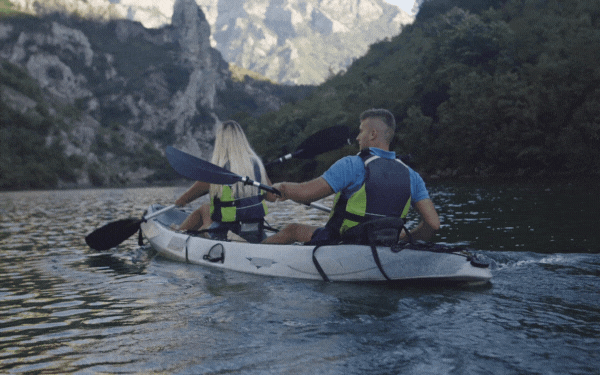
First off, there is the round-hull kayak. It is the most common type and just like the name suggests, the hull is round in shape. Since it is common, it is also the choice for most kayakers, especially beginners. This design offers good stability even in rougher waters and bad weather conditions.
For this reason, they are good for anyone who does not want to spend a lot of time handling their vessel but still wants to hit the rougher waters from time to time. Round hulls are what you will probably get with your first kayak purchase simply because they are the most common regardless of what you plan to use the craft for.
The V Shape Hull
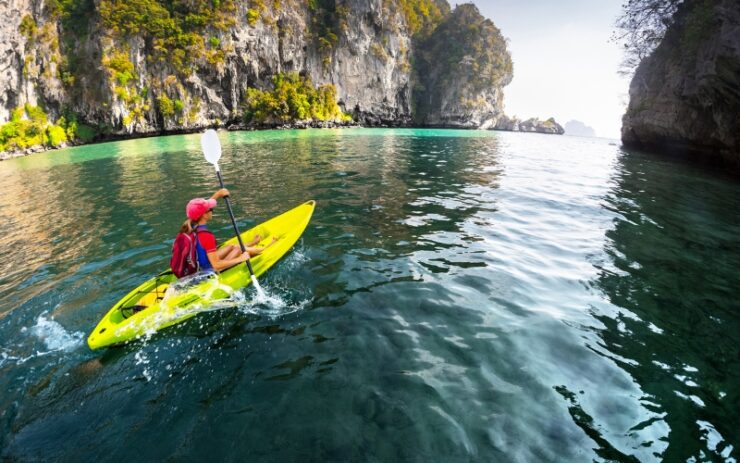
The second-most common hull design of kayaks makes use of the V shape. It is the faster of the two giving the kayaks greater speeds than what the round hulls are capable of. This is due to the V shape cutting water better and dealing with the oncoming waves and currents better.
Because of this, it is also easier to paddle especially during long stretches of straight paddling. The bad side of this hull design is stability, primary stability to be exact. Primary stability is how stable a kayak is in still, flat water.
Secondary stability deals with how well a kayak deals with leaning and balance in rougher waters. Where it gains in speed, it loses in balance. This makes it the preferred option for experienced paddlers and anyone who wants to predominantly kayak in seas and oceans.
The Flat Hull Design
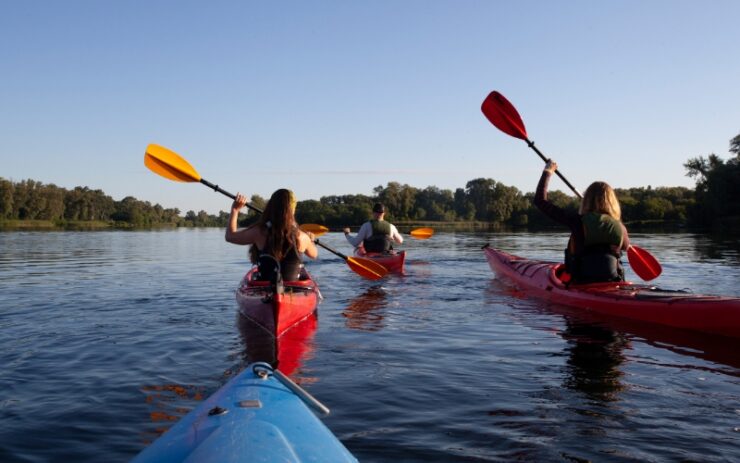
Those looking for versatility and not much else should absolutely look for a kayak that has a flat hull. A lot can be done with these paddling boats as it has the best contact with water. This is obvious because the area that actually touches the water is wider, giving suburb stability and easy turning maneuvers.
However, the speed is quite poor and therefore not for those looking to achieve greater speeds as they move. Whitewater kayaks are usually falt-hulled, short, and easy to maneuver with. The rapids require quick reflexes and ultimate stability and they cannot be too long because of narrow rivers with many sharp turns.
The Tunnel Hall Design
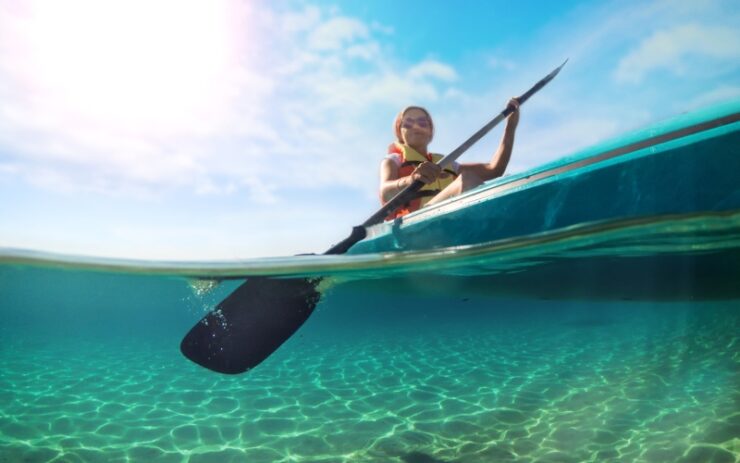
Also called a pontoon, this design has a tunnel down the entire length of the kayak. Out of all the kayaks, this one is the most stable because of this feature. Instead of a single point that touches the water like all other designs, it has two, one on each side of the tunnel.
This gives it two high points facing the water. Similar to the previous type, it sacrifices quite a lot of speed to achieve this amazing balance potential. The two sides create a drag and the water between them prevents the paddler from achieving greater speeds.
Chine Type
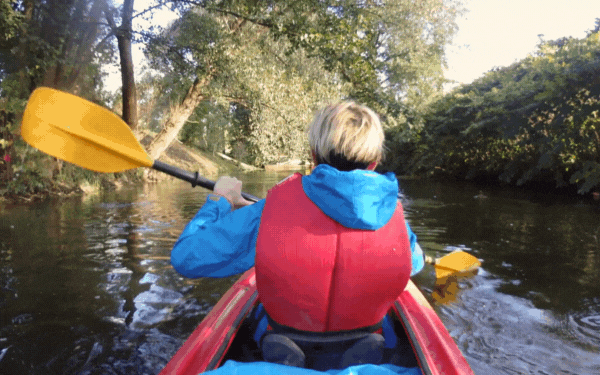
The palace where the hull of the kayak meets the sides is called the chine. Chinese play a vital role in the design and have to be talked about whenever the hull design is the topic of conversation. Chinese can be hard, soft, and multi-chine.
A hard chine has harder and sharper edges and points that cut into the water and allow special maneuvers. Kayaks that make use of them are good in whitewater and in sports kayaking competitions. This means they are the most common on V-shaped hulls.
On the other hand, a soft chine is what you typically find with round hulls. Therefore, they are the more common variety. The softer edges give more speed when it is needed and have smooth transitions down the sides of the entire kayak. It is much more of a sleek design than what a hard chine gives off.
All the other types are commonly called multi-chine, where there is a different combination of hard and soft chines. They can be present at different sections of the kayak in order to allow the best possible result based on what the kayak is supposed to achieve. Kayaks are usually made for specific purposes and conditions, so multi-chine designs bridge the gaps and make the vessels more versatile in whatever way they need it.
Hull Lenght
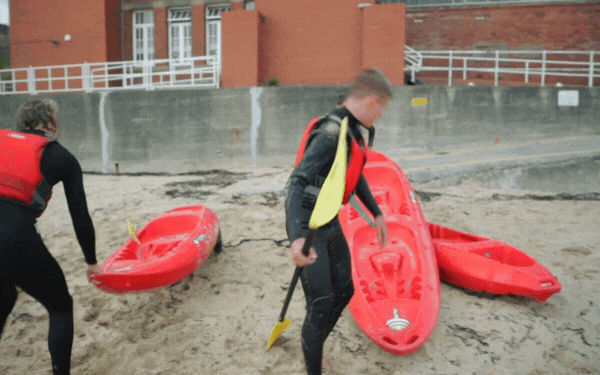
The longer the kayak, the faster and less table it is. This means that short kayaks that are around 8 feet long are more stable and more maneuverable. Kayaks that are between 14 and 16 feet in length are speedy, narrow, and sleek, but hard to turn and not very stable.
The best of both worlds comes with kayaks between 10 and 12 feet in length, which is the exact length range of most kayaks. Another distinction is according to the use of kayaks. Long kayaks are for touring and long distances. Mid-sized kayaks are recreational and fishing. Short kayaks are for whitewater and rapids, as well as crafty maneuvers and tricks.
Adelaide Gentry, a seasoned kayaking enthusiast and expert, is the driving force behind KayakPaddling.net. With over a decade of experience navigating the world’s most challenging waterways, Adelaide combines her passion for adventure with a deep knowledge of kayaking to provide insightful and practical guidance for paddlers of all levels.
Related Posts:
- 16 Best Kayak For Beginners 2024 - Kayaking Adventure Gear
- Heavy Duty Fishing: 11 Best Rods And Reels For Big Fish 2024
- 12 Best Beach Wagons & Carts 2024 - For All-Terrain
- 20 Best Inshore Spinning Reels 2024 - Capturing All…
- 10 Best Fish Finders Under $200 2024 - Top Affordable Picks
- 16 Best Kayak Fishing Paddles 2024 - Affordable Fishing Gear












